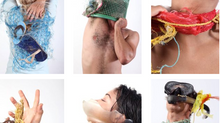Digital Project- RAW & JPEG
- Admin
- Oct 30, 2017
- 3 min read
What is RAW?
When you set the camera to shoot in RAW format you are basically shooting in the best quality that your camera can shoot in. RAW gives you far greater control over your image in post production while maintaining the integrity of the original file.
What is JPEG?
When you set your camera to shoot in JPEG format you can get more images on your SD card and can share the images across many platforms such as the web.
RAW format
When shooting in RAW format the image coming out of the camera is not the final product.
Once the RAW file has been processed this is were you can perform post production changes that are reversible, the changes are stored in another file called an .XMP file.
A RAW file is like a negative; an original of all the information recorded at the time the camera shutter was taken and it produces the largest possible file.
Facts about RAW
A raw file is exactly what is coming off of your camera’s sensor. It’s not been processed and with a RAW file all the onboard settings in your camera regarding saturation, contrast, sharpness, etc. do not affect the raw file.
So what are the benefits of shooting in RAW?
When you shoot in Raw, your camera captures the entire scene and all its different tones and saves them into a file, and that's where it stops. It does no evaluation of the scene, it makes no decisions, and it discards no information.
Also the RAW format has a larger bit-depth than the jpeg format. This means that it can capture and store far more information than a jpeg image, which also makes it easier to raw process.

As you can see with this example from google, it is alot easier to edit a RAW file and to manipulate it compared to a JPEG- the after processing shot is alot fancier and prettier than the flat original straight from the camera.
So I have mentioned the positives of shooting in RAW, so what are the negatives?
They take up A LOT more storage space: both on your memory cards and your computer hard drives.
Also if you’re shooting a lot of images very fast, you may overrun your camera’s buffer, and you’ll have to wait for the camera to catch up which could be a serious issue if you're shooting sport or fast paced events.
All raw files MUST be post-processed as already discussed, and this means extra time. If you shoot 300 photographs at a wedding, do you really want to sit down and post-process all those images? And... take into consideration what those images are going to be used for: simply posted online? Does the project call for massive post-processing time? If they are only going online then shooting in JPEG format could be the answer.
JPEG
What are the benefits of shooting in JPEG?
JPEG is the picture file format that has been around the longest. It’s acceptable everywhere you may want to use your pictures.
JPEG is a compressed file format which means your camera does a quick evaluation of the file and then discards some of the image information, which makes it a lot more time efficient.
If you’re shooting a lot of photographs, storage capacity on your cards could become a problem when shooting RAW as they are bigger files. With .JPEG you can literally put 5x to 8x more images onto a memory card.
If you’re shooting a fast moving event, your camera can buffer (slow down).JPEG images process much faster than raw images.
So what is the downside to shooting on JPEG?
It has a compression scheme that causes image degradation every time the file is opened and saved (a loss of quality). Which would be fine if the images were only going online or on a small brochure or other small format brief but it wouldn't be acceptable if you were shooting for a magazine or other large format brief.
A JPEG file only has 8 bits of information. This means it can’t record the color depth or capture the contrast range that a raw file can. If you make mistakes with the exposure on a JPEG file, chances are you won’t be able to save it like you could a raw file.
So what does all of this information mean and when should i use each format?
If I’m shooting a family function or an event where I know the photographs will never be used other than online, or for a very small print; I shoot .JPEG.
If I’m shooting for an assignment, or for a client brief, or ANYTHING that I think has the possibility of needing the highest possible quality I shoot RAW.
If I’m shooting for a client that requires both web based imagery and larger scale final output, then there is the option to set the camera to shoot both, which will save a lot of time.




























Comments